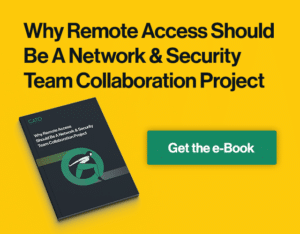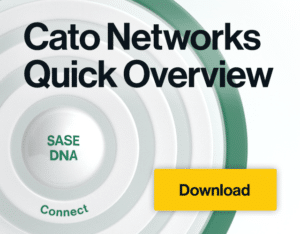ZTNA is no longer enough. So, what’s next?

|
Listen to post:
Getting your Trinity Audio player ready...
|
Remote work. Cloud applications. Mobile devices. They’ve eliminated the days of traditional security perimeters. Today, security must happen at the device level—no matter where that device is.
Zero Trust Network Access (ZTNA) earned its place as the G.O.A.T. for remote access—and rightly so. It revolutionized how enterprises secure remote work, but it has its limitations and challenges. UZTNA (Universal Zero Trust Network Access) is the next evolution in zero trust. It secures remote and hybrid work, without boundaries, vulnerabilities, or compromises.
In this blog post, we’ll unpack what UZTNA is, how it builds on ZTNA, and why Cato Universal ZTNA stands out. Prefer a deeper technical dive? Check out the eBook this blog is based on.
Who are you and what are you looking for?
Let’s start with the basics. ZTNA operates on the principle of “never trust, always verify.” It assumes that threats can come from inside as well as outside the network. It rigorously ID’s users and devices before giving them private network access to applications and resources.
ZTNA’s two main pillars are:
- Authentication: Users must be authenticated to prove who they are, and their device security posture is continuously monitored.
- Granular Access control: Users can only access authorized applications and resources. Anything they’re not explicitly permitted to see remains invisible to them.
This enhanced security shrinks the attack surface. In the unlikely event of a breach, the blast radius is contained, preventing lateral movement across the network. With secure remote access, businesses can adopt cloud services flexibly and at scale.
But remote and other workers don’t stay still
While ZTNA has been a big step forward, its efficacy isn’t as apparent when securing hybrid workforces. Here’s where things get tricky:
- Rigid access policies: ZTNA struggles to adapt to users moving between the office, home, and anywhere else.
- Complex configurations: IT teams are left juggling multiple policies for remote, hybrid, and on-prem users, adding IT complexity.
- User experience: Remote users might be treated to a great access experience, but for others, not so much.
- Multi-cloud headaches: Managing ZTNA across multi-cloud environments, where most enterprises operate, gets complicated and expensive.
What is UZTNA and why do you need it?
UZTNA (Universal Zero Trust Network Access) takes everything good about ZTNA, while solving for its limitations and challenges. It’s designed for any user, anywhere, on any device.
With UZTNA, there’s just a single, consistent security policy that applies universally—wherever users are. Every user is granted secure access based on the principle of least privilege, and everyone gets the same predictable access experience.
UZTNA integrates multiple security tools and policies into a unified system, replacing fragmented solutions across environments. So, while ZTNA is sufficient for remote-only use cases, UZTNA addresses use cases where the same remote users work from other locations. The result? Improved network visibility, simplified threat detection and response, lower operational overhead, and reduced IT complexity that frees up IT teams to focus on more strategic work.
eBook – ZTNA to Universal ZTNA | Download the eBookUZTNA vs. ZTNA at-a-glance
Here’s a quick comparison to highlight the key differences:
Why Cato Networks for Universal ZTNA?
When adopting zero trust, you should choose a vendor that can go beyond ZTNA and offers UZTNA.
Cato’s Universal ZTNA uses a single risk-based policy that controls user access to sensitive data. Access is controlled based on identity and a variety of access context attributes, including device security posture, application risk, and compliance ratings.
Cato performs continuous device security posture checks during each session. If a device fails these checks, access can be blocked to applications and resources until the device is compliant, or the connection can be terminated entirely.
Cato UZTNA, as a native capability of Cato SASE Cloud Platform, delivers optimized access for everyone, a better user experience, centralized management, maximized productivity, and consistent security. It provides what every organization needs—security that works everywhere, for everyone.















